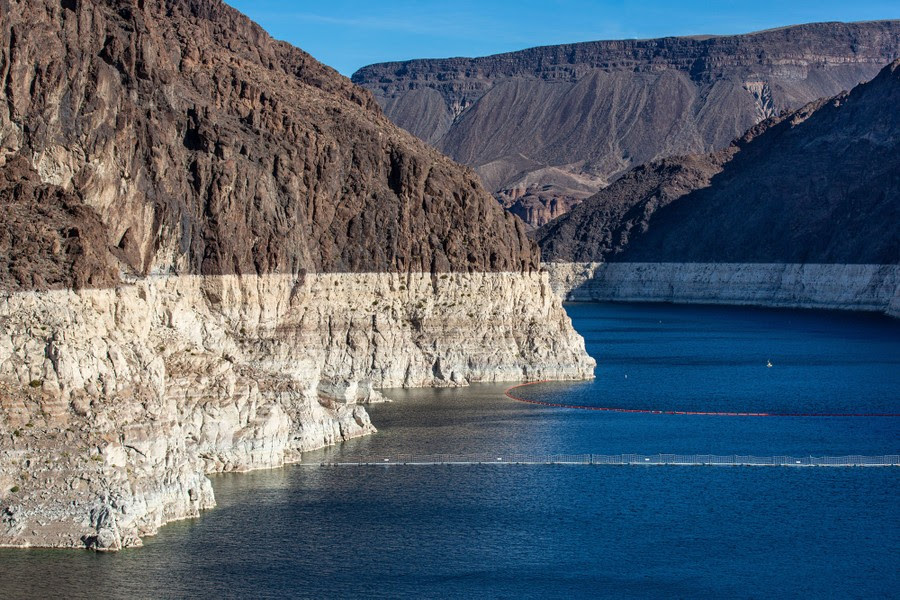Adam Dailey is an old boater on Lake Mead and he has seen the shoreline retreat several hundred feet due to the chronic drought that has hit the western United States.
One by one, the launching points that used to cover the shores of this lake near Las Vegas have been abandoned due to a lack of access to the surface, and only a ramp is now passable for boaters to launch their boats.
“Now everyone is fighting to use a single ramp and see how we can get by with that,” Adam Dailey says.
“It’s pretty sad what’s going on. But we’re still coming to try to enjoy it while we can.”
This lake was artificially created by the cyclopean construction of the Hoover Dam in the 1930s, and is on paper the largest water reservoir in the United States. But it hasn’t been at full capacity since 1983.
Despite this, the 640 km² lake provides water for tens of millions of people and countless farms throughout the Southwest.
However, its reserves are diminishing at a terrifying rate and the reservoir is now at only 25% of its capacity.
The National Parks Agency, which manages tourist access to Lake Mead, has spent more than $40 million since 2010 to keep boaters on the water.
Every time the lake level drops 120 cm, it costs another two to three million to adapt the boat ramp, a process that is “increasingly difficult and expensive.”
“Declining water levels due to climate change and 20 years of continuous drought have reshaped the park’s shorelines,” the agency summarizes on its website.
To demonstrate the problem, the state park agency has been placing signs since 2001 indicating the location of the lake shore at various times. In late June, the water is already about 300 paces below the sign marking the 2021 level.
The concentric strata left by the water on the steep shoreline vividly illustrate the extent of the drought that has occurred since the 1983 floods.
“We used to race water skis here,” assures Jaxkxon Zacher. “And that island over there, there was only the tip emerging 25 years ago.”
As the water drops, islands and other rocky reefs appear, all of the hazards for boats. “Every day there is someone who rips off his propeller because the week before there was no rock, but now it’s thirty or sixty centimeters lower,” says Jason Davis, who markets boats on the lake.
“There are fitted boats running aground, people ripping open their hulls.
The price of some boats runs into the hundreds of thousands of dollars, so a navigation error can be costly.
Some people can’t stand the hassle of navigating the lake and the long lines to launch their boat, and have set their sights on more welcoming waters.
This is the case in some rivers located downstream of the Hoover Dam, like Willow Beach, in neighbouring Arizona, where kayakers splash around under a blazing sun.
There, a small marina allowed Steve McMasters to dock his boat. “On weekends, the wait time to get your boat out of the water (at Lake Mead) can be four or five hours,” he says.
“I spent four months on the waiting list to get my spot” at Willow Beach, “I was lucky,” the boater adds.
Climatologists explain that there have already been droughts for more than 20 years in the American West. But the phenomenon, now combined with rising temperatures caused largely by human activities, is indeed transforming the region.
Higher temperatures mean less precipitation, and snow at higher elevations tends to melt earlier in the season and faster.
As a result, the Colorado River is losing the stable and steady supply of water it has enjoyed for centuries.
On a climatic scale, Lake Mead is just a newborn, but for humans, it is disappearing at an alarming rate.
For Jason Davis, the boat dealer, many more people need to come and see the extent of the damage for themselves.
“Until you see it, you can’t take the measure of it. You don’t think about it until it’s too late,” he says.
And if the lake level continues to drop? “I’ll have to find another job.”



Comment here